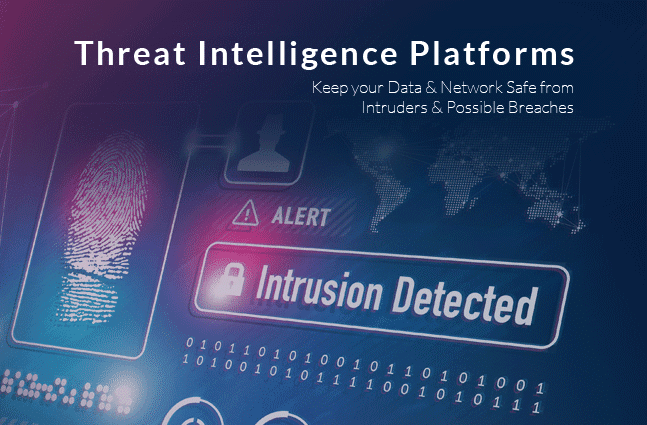
Top Open-Source Tools for Threat Detection in 2025.
Top 8 Open-Source Threat Detection Tools for 2025
As we advance into 2025, the landscape of cybersecurity continues to evolve, presenting both challenges and opportunities for organizations worldwide. The increasing complexity and frequency of cyber threats necessitate a robust approach to threat detection and response. At Teamwin Global Technologica, we recognize the paramount importance of safeguarding your enterprise against these threats. This article delves into the importance of utilizing open source security tools for enhanced security measures. top open-source threat detection tools that empower security teams to protect their infrastructure and ensure business continuity.
Introduction to Open Source Threat Detection
Open source threat detection tools are vital in the ever-expanding realm of cybersecurity. These tools leverage the collaborative power of community-driven development to offer comprehensive solutions for identifying and mitigating cyber threats. As organizations face a rapidly evolving threat landscape, open-source tools provide a cost-effective means to bolster security posture, enabling security professionals to detect and respond to threats in real-time. With the right tools, security teams can fortify their defenses and ensure the integrity of their networks and data.
What is Threat Detection?
Threat detection involves identifying and analyzing potential cyber threats that could compromise an organization’s security. It is a critical component of a comprehensive security strategy, encompassing various techniques such as intrusion detection, anomaly detection, and real-time threat monitoring. Effective threat detection allows security teams to swiftly identify and respond to security incidents, preventing breaches and minimizing potential damage. By utilizing advanced threat intelligence feeds and detection rules, organizations can anticipate and mitigate cyber risks, ensuring the safety of their operations.
Importance of Open Source Tools in 2025
In 2025, the significance of open-source tools in cybersecurity cannot be overstated. These tools offer a reliable and flexible solution for organizations seeking to enhance their security framework without incurring prohibitive costs. Free and open-source tools provide unparalleled access to advanced threat detection capabilities. to cutting-edge security features, enabling security analysts to conduct threat hunting and improve incident response capabilities with advanced detection engine technologies. By integrating open-source intelligence and threat data, organizations can empower their security operations with the agility and responsiveness required to tackle modern cyber challenges.
Overview of Threat Intelligence
Threat intelligence is the backbone of effective cyber defense, equipping organizations with the knowledge needed to anticipate and counteract potential threats. By leveraging threat intelligence platforms, security teams gain insights into the tactics, techniques, and procedures of threat actors. This intelligence-driven approach enhances security monitoring and enables proactive threat hunting. In 2025, the integration of open-source threat intelligence with existing security information and event management (SIEM) systems will be crucial in enhancing detection and response strategies, safeguarding your enterprise in an increasingly hostile cyber environment.
Top 8 Open Source Threat Detection Tools
Tool 1: Overview and Features
The first tool on our list is a game-changer in the realm of open-source security. This tool offers robust threat detection capabilities, integrating seamlessly with security information and event management (SIEM) systems to deliver real-time threat intelligence tools. Its ability to adapt to a rapidly evolving threat landscape makes it indispensable for security teams. By providing advanced anomaly detection and intrusion detection features, it helps security professionals maintain a resilient security posture, ensuring that potential threats are identified and addressed promptly.
Tool 2: Overview and Features
Next, we have a tool renowned for its comprehensive threat intelligence platforms. This open-source solution empowers security analysts by enhancing threat hunting capabilities and delivering actionable insights. With a focus on both cloud security and network security, it offers a holistic approach to safeguarding digital assets. The tool’s integration with free and open-source intelligence feeds ensures that users are well-equipped to handle insider threats, thereby fortifying their defenses against sophisticated cyber adversaries.
Tool 3: Overview and Features
Our third tool exemplifies the power of collaboration in the open-source community, offering unparalleled detection rules and threat data analytics. Designed to assist security teams in optimizing detection and response strategies, it utilizes cutting-edge threat hunting tools to detect anomalies and mitigate risks swiftly in enterprise security environments. By providing an intuitive security platform, this tool enables organizations to enhance their security operations and ensure the integrity of their infrastructure against real-time threats.
Tool 4: Overview and Features
The fourth tool stands out for its innovative approach to threat detection and response. It leverages open-source intelligence and security monitoring to deliver a proactive defense against cyber threats. By integrating seamlessly with existing security tooling, this tool offers a flexible and cost-effective solution for organizations seeking to enhance their security posture. Its real-time threat detection capabilities empower security teams to act swiftly, minimizing the impact of security incidents and ensuring business continuity.
Tool 5: Overview and Features
This tool is a cornerstone of open-source security, offering a comprehensive suite of features designed to help security teams combat cyber threats effectively. With its emphasis on threat intelligence and network security monitoring, it provides detailed insights into threat actor activities. The tool’s integration with security event management systems allows for efficient incident response, enabling organizations to swiftly address security vulnerabilities and protect their valuable data assets.
Tool 6: Overview and Features
Tool six is a remarkable open-source threat detection tool that combines threat intelligence feeds with advanced detection capabilities. It provides a best threat intelligence framework for organizations. user-friendly interface that assists security professionals in identifying and mitigating threats using intelligence tools effectively. By offering extensive support for threat hunting and incident response, this tool ensures that security teams are well-prepared to tackle modern cyber challenges. Its ability to adapt to the evolving threat landscape makes it a vital asset for any organization prioritizing security.
Tool 7: Overview and Features
The seventh tool in our lineup excels in providing real-time threat intelligence and security data analysis. Its open-source nature allows for continuous improvement and customization, making it an ideal choice for organizations seeking flexibility in their endpoint detection strategies. By focusing on anomaly detection and intrusion detection, this tool helps security teams anticipate and neutralize potential threats before they escalate. Its seamless integration with existing security frameworks ensures a cohesive and robust defense strategy.
Tool 8: Overview and Features
Finally, tool eight rounds out our list with its exceptional capability to enhance security operations through open-source collaboration. It leverages sophisticated threat detection algorithms to provide early warnings of potential cyber threats. The tool’s emphasis on security monitoring and response ensures that organizations can act swiftly to protect their networks and data. By prioritizing open-source intelligence and real-time threat detection, it empowers security teams to maintain a vigilant and proactive security posture.
Evaluating Threat Detection and Response Tools
Criteria for Selecting the Right Threat Detection Tool
When selecting the right threat detection tool, it is imperative to consider several key criteria, including the effectiveness of the detection engine, to ensure a robust security posture. Firstly, the tool must integrate seamlessly with existing security information and event management (SIEM) systems, providing real-time threat detection and intelligence. The ability to adapt to evolving cyber threats is crucial, so tools offering continuous updates and community-driven enhancements, like advanced threat detection systems, are preferred. Additionally, consider the tool’s capacity for advanced intrusion detection and anomaly detection, as these features enable security teams to swiftly identify and neutralize potential threats. A tool’s ease of use and support for threat hunting and incident response capabilities are also vital factors to consider.
Comparative Analysis of Features
Conducting a comparative analysis of threat detection tools involves examining their features with a focus on security effectiveness and operational efficiency. Tools that provide comprehensive threat intelligence platforms and integrate open-source intelligence can significantly enhance threat awareness. The best threat detection tools offer robust network security monitoring and cloud security capabilities, empowering security professionals to protect against both external and insider threats. It’s essential to assess the tool’s ability to handle large volumes of security data while maintaining a high level of accuracy and speed in detecting and responding to threats. By evaluating these features, organizations can identify tools that align with their specific security needs and objectives.
Assessing Security Posture with Open Source Tools
Utilizing open-source tools to assess security posture is a strategic approach for organizations aiming to fortify their defenses cost-effectively with free and open source solutions. Open-source security tools offer unparalleled transparency and flexibility, allowing security teams to customize detection rules to suit their unique environments. These tools often leverage threat intelligence feeds and real-time threat data to bolster security operations, providing insights into potential vulnerabilities and threat actor activities. By incorporating open-source threat detection tools, organizations can enhance their security monitoring capabilities, ensuring swift incident response and improved resilience against potential security threats. This approach not only strengthens overall security posture but also assures stakeholders of a proactive and vigilant defense strategy.
Integrating Threat Intelligence Platforms
Understanding Threat Intelligence Feeds
In the realm of cybersecurity, threat intelligence feeds are indispensable for maintaining an effective defense against evolving threats. These feeds provide real-time information on potential security threats, enabling security teams to anticipate and neutralize attacks before they can cause significant harm through advanced threat detection methods. By integrating threat intelligence platforms with existing security information and event management (SIEM) systems, organizations can enhance their threat detection capabilities. This integration allows for a more comprehensive view of the threat landscape, empowering security analysts to make informed decisions and respond to incidents with greater precision and speed.
Enhancing Detection with Threat Intelligence
Enhancing threat detection with the aid of threat intelligence is crucial for maintaining a robust security posture in 2025. By leveraging threat intelligence feeds, security teams can improve their ability to detect anomalies and identify potential threats early in the attack cycle. These insights are essential for effective threat hunting and incident response, allowing organizations to stay one step ahead of threat actors using the best threat intelligence available. The integration of open-source threat intelligence with detection tools not only strengthens security operations but also provides a proactive approach to safeguarding networks and data against sophisticated cyber threats.
Best Practices for Integration
To maximize the benefits of integrating threat intelligence platforms, organizations should adhere to several best practices. Firstly, ensure that threat intelligence feeds are regularly updated to reflect the latest threat landscape. Additionally, integration should be seamless with existing security tooling, such as SIEM systems, to ensure real-time threat detection. Prioritizing collaboration between security professionals and leveraging open-source intelligence can enhance detection rules and improve response strategies. By adopting a holistic approach to integration, organizations can fortify their defenses, ensuring a resilient security posture against both external and insider threats.
Future of Open Source Threat Detection
Trends in Cloud Security and Threat Hunting
As we look towards the future, cloud security and threat hunting are expected to be pivotal in open-source threat detection. The increasing adoption of cloud services necessitates robust security measures to protect sensitive data and infrastructure. Open-source tools offer affordable and flexible solutions for organizations seeking to enhance their cloud security posture. Additionally, threat hunting will play a critical role in identifying potential threats within cloud environments. By employing advanced threat intelligence and detection tools, security teams can proactively defend against emerging cyber threats, ensuring business continuity in an ever-changing digital landscape.
Advancements in Detection Rules
The development of advanced detection rules is at the forefront of open-source threat detection innovation. These rules enable security teams to identify and mitigate cyber threats with greater accuracy and efficiency. By leveraging community-driven insights and open-source intelligence, detection rules can be continuously refined and adapted to address new threats. This ongoing evolution is essential for keeping pace with the sophisticated tactics of modern threat actors. As detection rules become more precise, organizations can improve their incident response capabilities, reducing the risk of breaches and enhancing overall security posture.
The Role of Community in Open Source Security
The open-source community plays a vital role in the evolution of threat detection and response strategies. By fostering collaboration and knowledge-sharing, the community drives innovation and enhances the capabilities of open-source security tools. Security professionals can leverage community contributions to develop more effective threat hunting tools like open source security tools and integrate cutting-edge features into their security platforms. This collaborative approach ensures that open-source solutions remain at the forefront of cybersecurity, providing organizations with the resources they need to safeguard their digital assets against ever-evolving cyber threats.
5 Surprising Facts About Top Open-Source Tools for Threat Detection in 2025
- Many open-source threat detection tools leverage machine learning algorithms, enabling them to adapt and improve their detection capabilities in real-time.
- Community-driven development of these tools often results in rapid updates and enhancements, making them more effective against emerging threats.
- Some of the most popular open-source tools for threat detection in 2025 have been developed by cybersecurity enthusiasts and independent researchers, rather than large corporations.
- Collaboration among different projects has led to the creation of integrated platforms that combine the strengths of multiple tools, increasing overall threat detection accuracy.
- Open-source threat detection tools are not only cost-effective but also provide transparency, allowing organizations to audit and customize their security measures as needed.
What are the best open-source tools for threat detection in 2025?
In 2025, some of the top open-source tools for threat detection include Zeek, Snort, and Suricata. These tools are essential for security teams to detect network intrusions and automate threat responses effectively. Additionally, open-source SIEM platforms like ELK Stack and Wazuh are gaining popularity for their robust capabilities in threat management and visibility.
How do open-source threat intelligence platforms enhance an organization’s security posture?
Open-source threat intelligence platforms provide organizations with valuable insights into threats, enabling security teams to improve threat visibility and response capabilities. By integrating threat intelligence data into their existing security frameworks, organizations can better understand the threat landscape and adjust their defenses accordingly, ultimately enhancing their security posture.
What is the role of threat hunting techniques in threat detection?
Threat hunting techniques play a crucial role in proactive threat detection by allowing security teams to actively search for indicators of compromise (IOCs) within their networks. This approach helps in identifying potential threats before they can cause significant damage, making it an essential component of a robust threat detection and response strategy.
How does an open-source host-based intrusion detection system work?
An open-source host-based intrusion detection system (HIDS) monitors and analyzes activities on individual hosts or devices within a network. By examining system logs and user behaviors, these systems can detect suspicious activities and potential threats, providing security teams with critical insights into their organization’s security posture.
What are the benefits of using free and open-source detection tools?
Free and open-source detection tools offer numerous benefits, including cost savings, community support, and flexibility. Organizations can customize these tools to meet their specific needs without incurring licensing fees, making them an attractive option for improving an organization’s security posture and threat management capabilities.
What is the difference between threat hunting and automated threat detection?
Threat hunting is a proactive approach where security teams actively search for threats within their networks, whereas automated threat detection relies on predefined rules and algorithms to identify potential threats. Both methods are complementary; threat hunting helps refine detection rules and enhances an organization’s overall threat detection strategy.
How can organizations implement effective endpoint detection and response?
To implement effective endpoint detection and response (EDR), organizations should deploy open-source EDR solutions that provide real-time monitoring, threat detection, and automated response capabilities. Integrating these solutions into existing security frameworks enhances an organization’s ability to respond to threats quickly and efficiently.
What are various security tools that can support threat intelligence dissemination?
Various security tools, including SIEM platforms, threat intelligence platforms, and open-source threat hunting tools, can facilitate effective threat intelligence dissemination. By sharing threat intelligence feeds across these tools, organizations can improve their situational awareness and collaboration within security teams, leading to better threat protection.
What is the significance of threat intelligence feeds in network security?
Threat intelligence feeds provide real-time data on emerging threats, vulnerabilities, and attack patterns, which is crucial for enhancing network security. By incorporating this information into their security operations, organizations can proactively defend against advanced threats and enhance their overall threat detection and response strategies.









